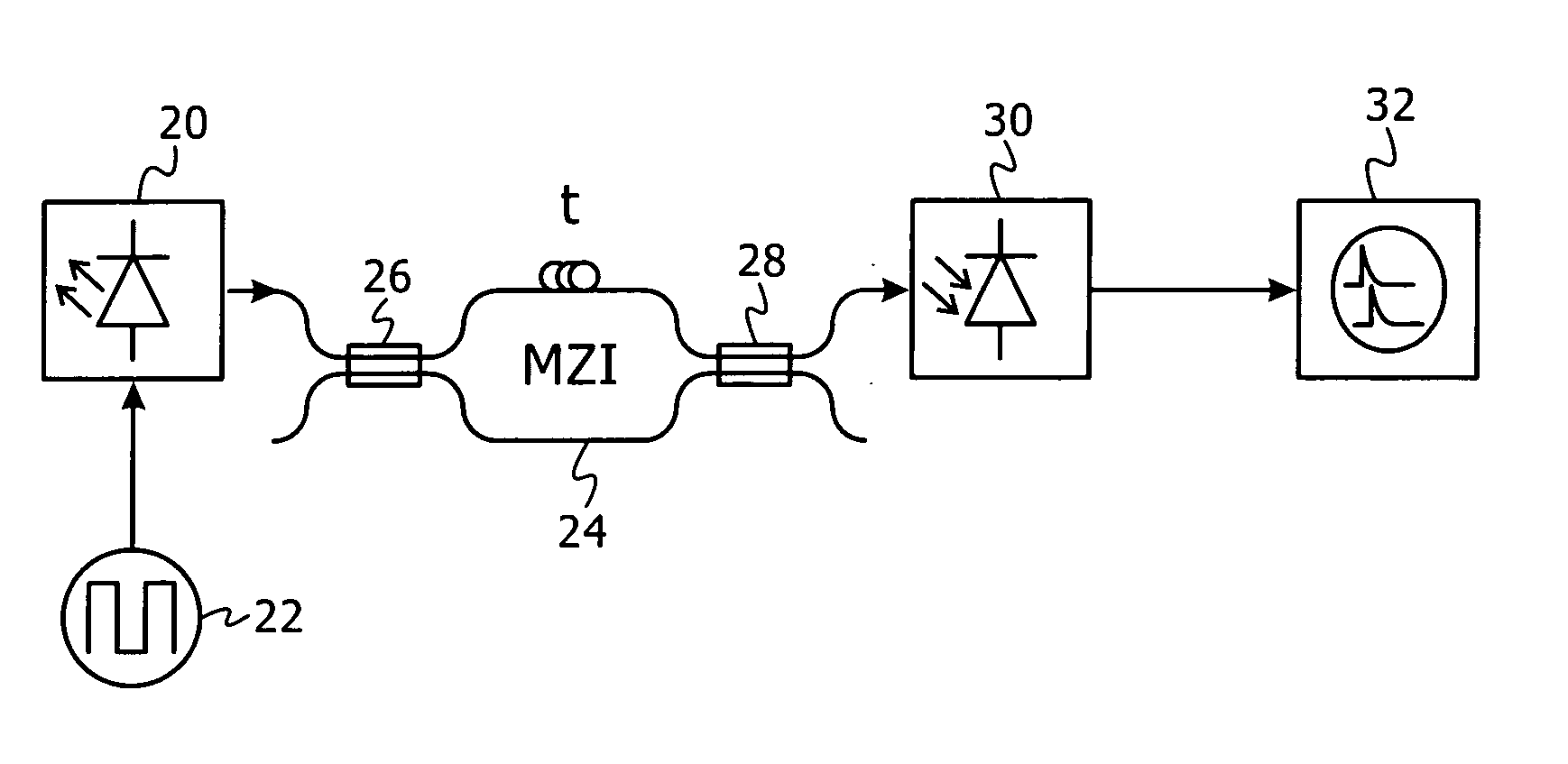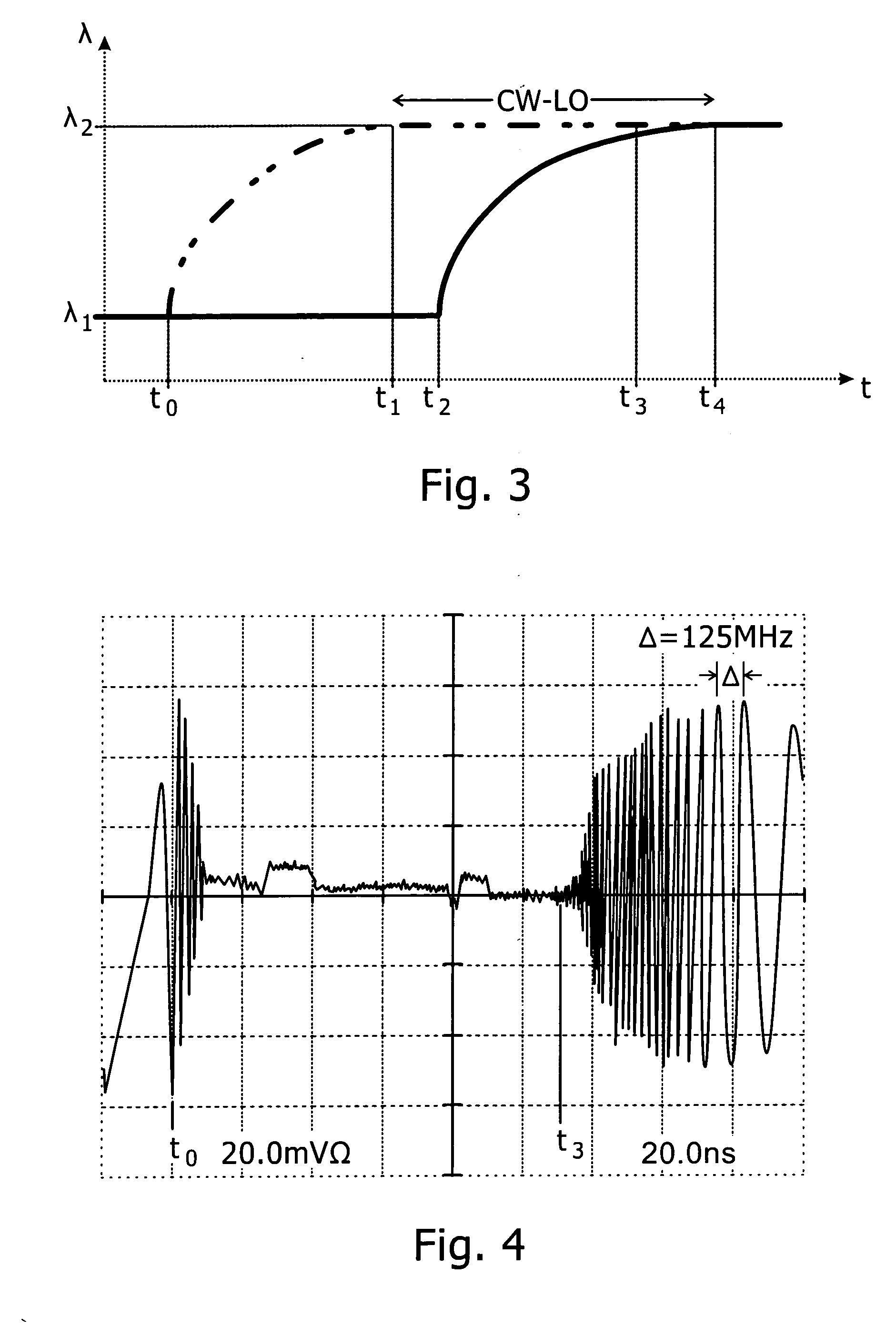Measurement of wavelength transients in tunable lasers
a technology of tunable lasers and wavelength transients, which is applied in the direction of lasers, instruments, electrical equipment, etc., can solve the problems of limited spectral resolution by the resolution of wavelength selective devices, and achieve the effect of enabling a level of temporal and spectral accuracy
- Summary
- Abstract
- Description
- Claims
- Application Information
AI Technical Summary
Benefits of technology
Problems solved by technology
Method used
Image
Examples
Embodiment Construction
[0067] Reference is now made to FIG. 1, which illustrates schematically a prior art set-up for measuring the spectral wavelength transients of a tunable laser 10, such as would arise from application of a step-function drive to the laser tuning section. Part of the laser signal is passed to a wavelength selective device 12, and the modified output is detected 14 and viewed on a fast oscilloscope 18. This filtered wavelength transient can then be compared on the oscilloscope with the direct laser output, as detected on a second detector 16, and the transient form can thereby be determined.
[0068] Reference is now made to FIGS. 2A and 2B, which are schematic circuit diagrams of self-heterodyne, temporal frequency measurement apparatus, constructed and operative according to preferred embodiments of the present invention, for measurement or determination of wavelength transients in a tuned laser according to preferred methods of the present invention.
[0069] Referring first to FIG. 2A,...
PUM
 Login to View More
Login to View More Abstract
Description
Claims
Application Information
 Login to View More
Login to View More - R&D
- Intellectual Property
- Life Sciences
- Materials
- Tech Scout
- Unparalleled Data Quality
- Higher Quality Content
- 60% Fewer Hallucinations
Browse by: Latest US Patents, China's latest patents, Technical Efficacy Thesaurus, Application Domain, Technology Topic, Popular Technical Reports.
© 2025 PatSnap. All rights reserved.Legal|Privacy policy|Modern Slavery Act Transparency Statement|Sitemap|About US| Contact US: help@patsnap.com



